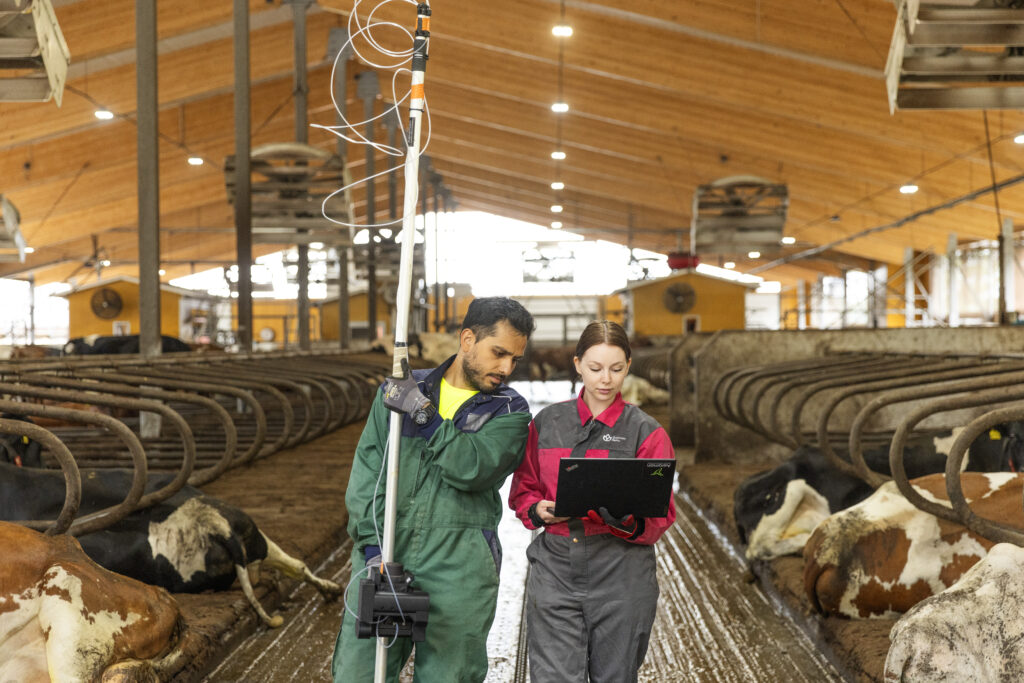
Throughout this year, CANMILK has been conducting two unique campaigns to measure methane concentration in a dairy barn. This data provides a new perspective on how methane, a strong green-house gas, is generated by cows and then diluted by the large volume of air within the barn.
Agricultural methane emissions are a significant source to global warming. Most of these emissions stem from rumination and belching of cattle. Within the EU, there are around 77 million cows on 1.8 million cattle farms. Each of these cows is a tiny methane point source, but their combined contribution totals 158 million tonnes of CO2 equivalent of methane emissions annually (4.5% of the EU’s total emissions).
The challenge within these barns lies in the highly diluted concentration of methane. There is about 20 – 200 ppm of methane in the barn air, which is far too low for traditional combustion technologies to be feasible. The CANMILK project is developing an innovative technology based on plasma and catalysis, with the potential to remove all traces of methane with feasible efficiency.
The methane measurements campaigns were carried out together with a subcontractor, Aeromon Oy, in southern Finland, within a modern curtain-walled barn housing 240 cows. The barn was naturally ventilated with the automated curtain walls controlling the amount of inflowing air. During the total measurement period of eight weeks, encompassing both in winter and summer seasons, outside temperature varied from -15 °C up to +28 °C. The main finding from these measurements was the surprisingly strong impact of the outside temperature on the methane concentration, which was ten times higher on the coldest winter days compared to hot summer days.
The data gathered during the campaign will be used to model the methane formation and movement inside the barn. In later stages of the CANMILK project, the developed plasma-catalysis technology will be validated using synthetic barn air. The gas composition will be based on these measurements and can be adjusted to simulate the seasonal differences in the methane concentration.
The results will be published in a forthcoming scientific paper. Subscribe to CANMILK newsletter here on our CANMILK website and follow us on LinkedIn and Twitter to hear the latest news about the up-coming publication.